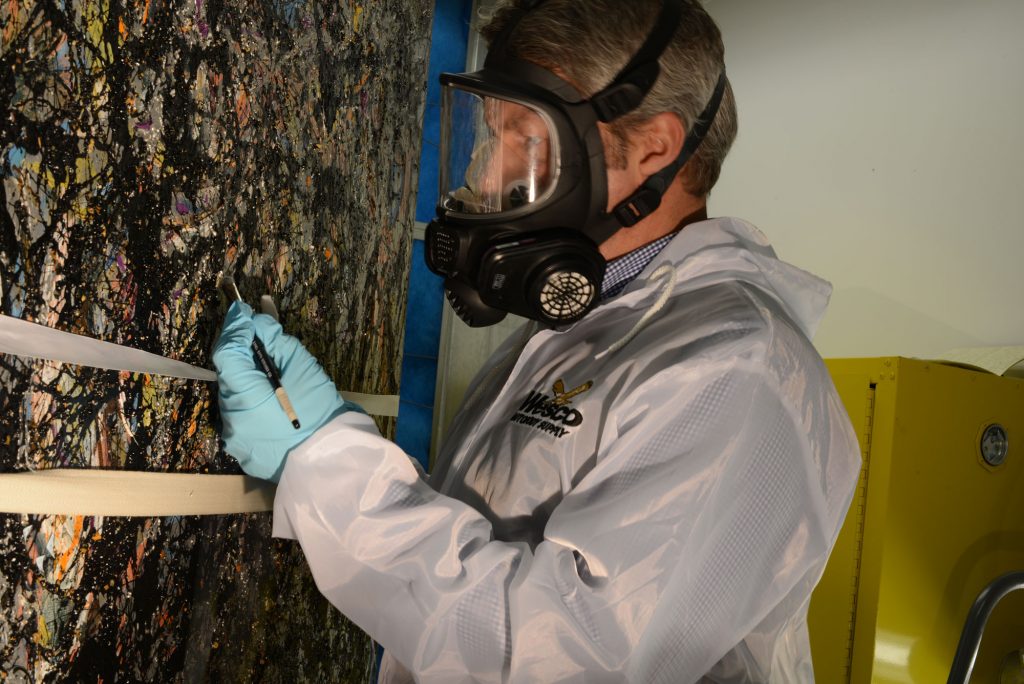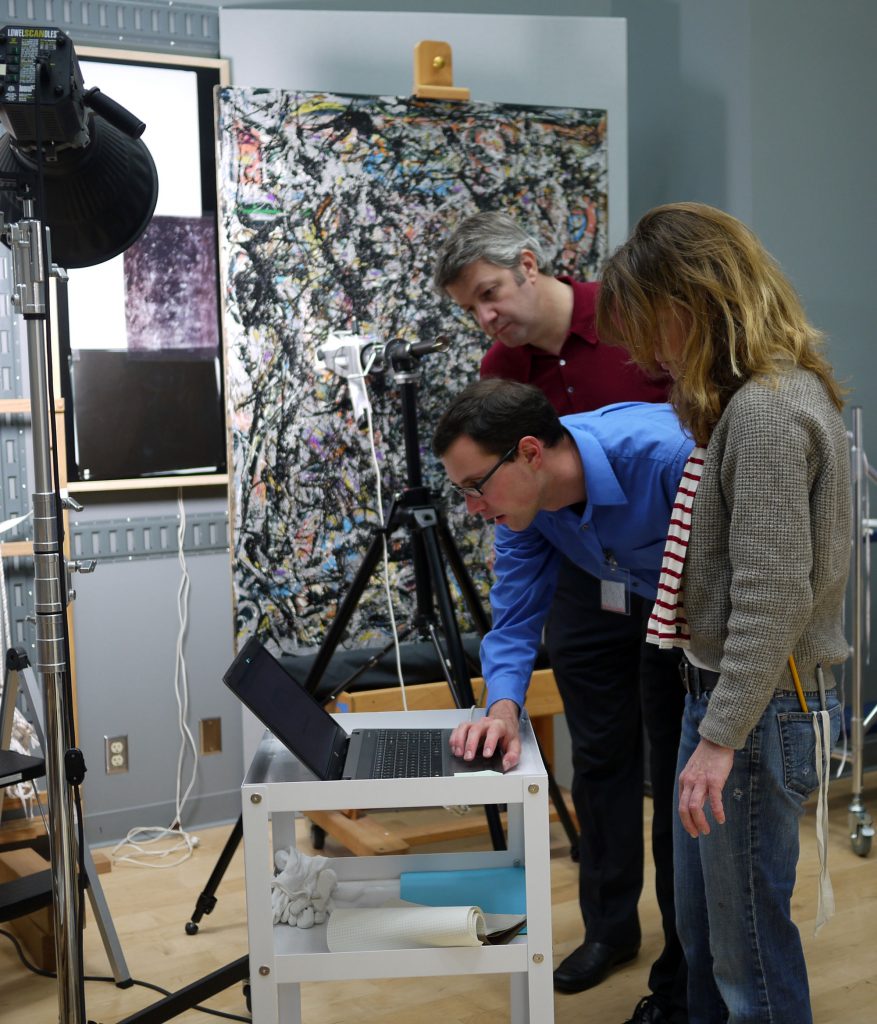Sea Change
SAM Treatment

SAM Chief Conservator Nick Dorman removing varnish on Sea Change.
Using a cotton swab soaked in the toxic solvent xylene, SAM Chief Conservator Nick Dorman restored the painting by painstakingly removing varnish that covered the surface of the painting in the SAM Neukom Conservation Studio’s spray room. A 2012 Bank of America Art Conservation Project grant enabled SAM to study and treat Sea Change on-site, to undertake scientific analysis with colleagues at the J. Paul Getty museum and to compare research on other Pollock paintings at major collections in Europe and around the U.S.
Watch SAM Chief Conservator Nick Dorman restore Sea Change:

Studying Sea Change with X-ray Fluorescence spectrometer.
To see how Pollock built the layers of paint from the canvas to the painting’s surface, SAM and Getty conservators took a small number of tiny speck-sized cross-section samples of the painting from the edges of existing damages (where pebbles fell off in the past). Using an X-Ray Fluorescence Spectrometer revealed the some of the elements found in the painting’s pigments. This research and further analytical studies at the Getty helped conservators and scholars to understand more about the way Pollock painted; One color, the purple paint in Sea Change, has the same pigment that commonly makes cosmetic eye shadow.
